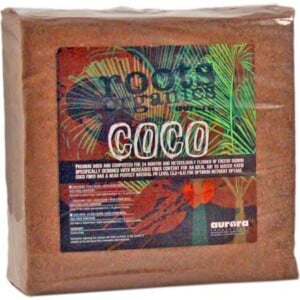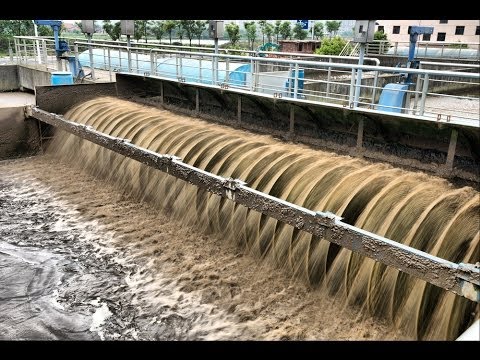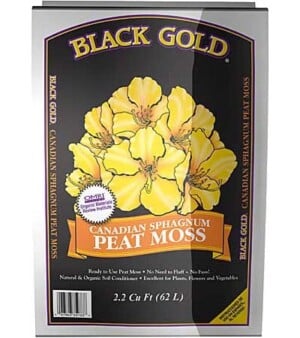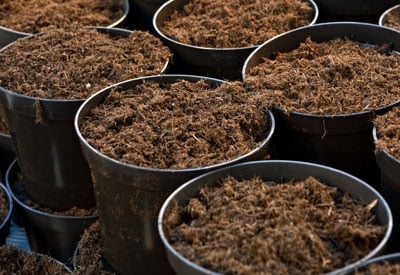There’s a wide range of dialogue occurring over which soil conditioner is best in your yard: sphagnum peat moss or coconut coir? Sustainability is part of the dialogue. Effectiveness is one different.
Actuality is every are good additions to yard soil. Every are pure and plant based. Every help break up heavy, clay soils and improve water retention in sandy soils. Each has its private report of helpful nutritional vitamins it supplies to the soil. Every encourage pure helpful microbial populations.
Every, moreover, have drawbacks. And that’s the place the dialogue is out there in, on every the small drawbacks which may be compensated and the larger ones which will’t.
Coir, in its diverse sorts, is the relative newcomer to the yard. Prolonged frequent with hydroponic growers for its water retention, its deterrence of fungus gnats and certain illnesses, and its root-supporting development, it carries these positives into the yard the place it capabilities similar to sphagnum moss.

A BESTSELLER!
Coco Fiber
Soak compressed bale in water to develop. One 5-kilo bale makes as a lot as 16 gallons.
$11.95Be taught further
Manufactured from 100% pure compressed coconut husk fibers, Roots Organics® Coco Peat is a terrific addition to your planting mixes, possessing a near good pure pH stage of 5.2-6.3 for final nutrient plant consumption. On the market in compressed 5kg blocks — makes spherical 2 cubic ft or 16 gallons (65-70 liters) of expanded media.
Indoor coir growers have prolonged recycled their much-used hydroponic coir into their outdoors vegetable gardens and compost piles. It’s just about pretty much as good outside as in.
Coir and sphagnum peat every take up a wide range of water. Coir retains water in the long run increased than such rising mediums as perlite and rock wool, which suggests it’s going to retain water longer throughout the yard as correctly. Every are superb in trapping air throughout the soil, air that may revenue plant roots.
Coir pH typically runs 6 – 6.7, close to neutral. Together with coir will nearly protect the pH of the soil you’re together with it to the equivalent. Sphagnum tends to be acidic and is commonly utilized in potting of acid-loving ornamentals. Slight adjustments is prone to be required. In spite of everything, sphagnum makes solely part of a complete soil mix, — not typically as lots as a third as actually useful in Mel Bartholomew’s Sq. Foot Gardening soil system — making small increment pH adjustments not so troublesome.
Coir could also be extreme in salts. Grown in ocean climates, it normally picks up further salts after harvest. Some growers counsel washing even producers which is perhaps pre-soaked to rid them of salts. Some producers shouldn’t solely washed nevertheless composted, making for further balanced mineral provide.
It’s been found that the extreme potassium content material materials of coir can intrude with calcium uptake. As soon as extra, addition of calcium amendments can take care of this disadvantage in yard soils.
A analysis (hyperlink not energetic) from Utah State Faculty found that in straight hydroponic rising situations (soilless, merely peat or coir, every combined with perlite for drainage, and nutrient reply) found “poor plant growth in coir,” a consequence that’s contradicted by the success of all types of indoor growers using coir. “No mannequin (of coir) carried out consistently increased than sphagnum peat,” it concludes.
Whereas we suggest slightly bit care sooner than it’s used and certain supplementation to boost calcium ranges, if important, we don’t assume, as a result of the analysis recommends, the variations it discovered between peat and coir suggest coir be used “in good warning.” Proper right here good warning seems to indicate with out modification or supplementation.
Hydroponics is one issue. Mixing it with yard soil makes for a really completely totally different proposition.


The one draw back that’s troublesome to get better from is one referring to peat moss and its sustainability. Peat moss is harvested from bogs which have taken tons of, if not 1000’s of years to kind as ineffective plant supplies piled on ineffective plant supplies. As quickly as harvested, it’s not coming once more anytime shortly. Coir comes from the shell and fibers of coconuts. It’s renewable.
And that’s the place the middle of the discussions lay. If coir is renewable, and peat simply is not, why not use coir, no matter its minor drawbacks? In any case, peat has drawbacks — its acidity and talent to “lure” water in outdoors soils, making them mucky — as correctly.

IT’S ORGANIC!
Sphagnum Peat Moss
Good for acid-loving vegetation like azaleas, rhododendrons, roses and conifers.
$19.50Be taught further
A pure, pure soil conditioner! Black Gold® Pure Peat Moss is an excellent all-purpose potting mix ingredient and soil modification. Includes a distinctive cell development that helps regulate moisture and air spherical plant roots creating a superb rising setting.
Not all people considers peat unsustainable. The Canadian Sphagnum Peat Moss Affiliation, in it’s “Enterprise Social Responsibility Report” from 2014 makes an argument that peat is a helpful useful resource they’re defending. In a well-circulated piece (amongst peat lovers anyway) that used CSPMA’s figures, Jeff Ball at Yard Rant made a case that peat is renewable:
Listed beneath are the straightforward info: Canada has over 270 million acres of peat bogs which produce peat moss. Yearly the peat moss enterprise harvests solely 40,000 acres of peat moss largely for horticultural use. For many who do the maths that entails actually considered one of every 6,000 acres of peat moss is harvested yearly. And proper right here is the cherry on prime. Peat bogs reside entities. The peat bogs develop 70% further peat moss yearly than is harvested. With that data I bear in mind peat undoubtedly a renewable helpful useful resource.
On the alternative aspect, the Oregon State Faculty Extension Service makes an excellent case, primarily based totally on sustainability, for using coir in its place of peat. It quotes totally different analysis that examined the effectiveness of sphagnum peat and coir:
Researchers at Auburn Faculty and Faculty of Arkansas in distinction peat and coir as soil amendments for horticulture. They found that coir carried out on par with peat.
The third technique proper right here is to utilize a lot much less sphagnum moss in case you’re using it the least bit. Sq.-foot gardener Bartholomew states that his surroundings pleasant, small home gardening methods justify the utilization of peat in his soil system. The peat enterprise has checked out combining sphagnum with totally different merchandise in methods through which maintain its effectiveness in smaller portions. Sphagnum peat moss is current in increased producers of potting soil.
We’d be curious to take heed to what you assume. Do you assume peat could also be correctly managed, renewable or not? What’s been your rising experience with coir? Let’s us know proper right here, or over at our Fb internet web page.
